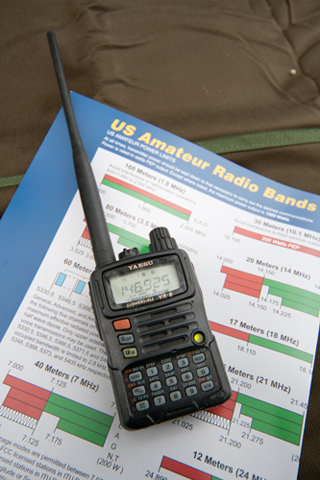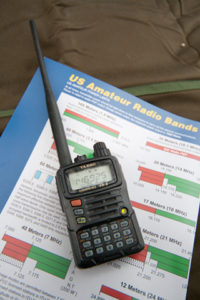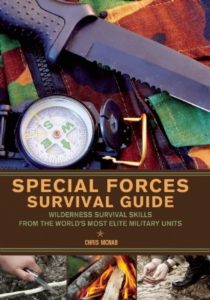
Tragedy brings cell phone outages during Boston Marathon incident, but ham radio just keeps on working.
Runners weren’t the only thing stopped at the 2013 Boston Marathon following the bombing — cell phone operation screeched to a halt as well.
The untold story of the marathon is how nearly 240 volunteer amateur radio operators handled communications for the event. A ham radio network or “net” was established to pass traffic (on-air information or data) between operators stationed at checkpoints throughout the course and the net control operator.
Radio operators keep the event going by communicating injuries, equipment breakdowns, needed supplies, even race updates on leaders and slowpokes.
Panic Causes Cell Phone Outages

But when two bombs were detonated at the Boston event, the race was halted. Soon the cell phone networks became overloaded and quit working.
“Many runners don’t carry cell phones, and they were desperately trying to use anyone’s phone, including mine, to call their loved ones at the finish line,” wrote ham radio operator Tim Carter, W3ATB. “Everyone was getting a busy signal. That could have happened because the cell networks were overloaded, or because officials turned off the cell towers.
“The bottom line is there were several hundred people who were able to continue to communicate during the disaster. Police, fire and others like me who had radios were still talking,” Carter said.
Following the bombing, some media outlets reported officials shut down the network to prevent the bombers from using cell signals to detonate additional devices.
The cell phone industry itself admits cellular networks are not designed to — and, in fact, cannot — handle simultaneous usage by all customers. Overloading the system during times of disaster is a safe bet.
Ham radio used at events such as this typically operate VHF 2-meter (144-148 Mhz) or UHF 70 cm (420-450 Mhz) FM. Operators employ either vehicle-mounted mobile radio stations or use handheld “HT” Handie-Talkies that relay signals between the operator and repeater stations (repeaters are high-power, high elevation stations that magnify weak signals to increase coverage area).
“Perhaps this will be the wakeup call to convince you to get your amateur radio license and discover what hundreds of thousands of us already know,” wrote Carter. “We know how to stay connected in disasters and other situations where traditional communications systems suddenly don’t work.”
Click here to read more about ham radios during the Boston Marathon at ARRL (American Radio Relay League).


![Best Concealed Carry Guns In 2025 [Field Tested] Wilson Combat EDC X9S 1](https://gundigest.com/wp-content/uploads/Wilson-Combat-EDC-X9S-1-324x160.jpg)


![Best 9mm Carbine: Affordable PCCs [Tested] Ruger Carbine Shooting](https://gundigest.com/wp-content/uploads/Ruger-Carbine-Shooting-100x70.jpg)
![Best AR-15: Top Options Available Today [Field Tested] Harrington and Richardson PSA XM177E2 feature](https://gundigest.com/wp-content/uploads/Harrington-and-Richardson-PSA-XM177E2-feature-100x70.jpg)
